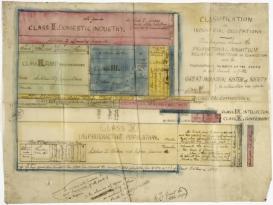In earlier work Harro Maas looked in detail at the quite drastic change in methods in political economy in Victorian Britain in the second half of the nineteenth century. One of his main messages was that an economic practice taking mechanical analogies as mode of understanding socio-economic phenomena replaced a political economists’ practice that was largely based on introspection as a mode of observing and theorizing the social world. Maas' concern in this project was to the other side of this coin: What did introspection actually mean in terms of concrete research practices? How did introspection survive up to our days in economics?
Introspection had it roots in Dugald Stewart’s version of common sense philosophy (in the Victorian context) and survived at least until John Maynard Keynes and his theoretical antipode Lionel Robbins as a legitimate inductive way of theory formation. It gave ‘"insider’s insight" into the motive forces of economic agents. After the Second World War, introspection definitively fell in disrepute, most famously after Paul Samuelson’s explicit verdict that no economic theorist should take recourse to inner psychological states in explaining economic behavior. Detached and distant observation was claimed its better and more scientific alternative (as in so many other fields of science). Yet to our day philosophers and methodologists of economics persistently describe the way in which economists gather behavioural assumptions of economic agents as a "form of mental experimentation" or "introspection." Even Paul Samuelson regularly legitimated his behavioral assumptions on the basis of "common sense"—implicitly referring back to introspection’s origins in Stewart’s mental philosophy.
Harro Maas' project aimed to reconstruct the different meanings and reputations of "introspection" through economics’ history, to thus show what recourse to introspection meant, and still means, for concrete research practices. This reconstruction led him to re-investigate the relation between the role of the imagination, thought experiments, and in the end situational analysis in economists’ practices. He started with a study of an Irish economist who, by the mid-nineteenth century, was one of the most explicit defenders of the introspective method, and for whom introspection in practice served as a means to bridge geographical and cultural distances: John Elliot Cairnes’ study on the slave economy of the secession states. First published 1862, this study served as a benchmark for understanding the economy of the Southern states well into the first decades of the twentieth century. With the rise of cliometrics after the Second World War (econometrics applied to history) the book was debunked as a paragon of flawed economic history writing. The following diagram, recently found in the archives of the Victorian political economist Stanley Jevons, the protagonist of much of Harro Maas' earlier work, aimed to uncover the relation between human needs and motives and production not by introspection, but by means of a stratigraph. It was made around 1857 and may serve as a reminder that intense peering at statistical data rather than intimate musings about human motives became the norm for "good science" in economics.

